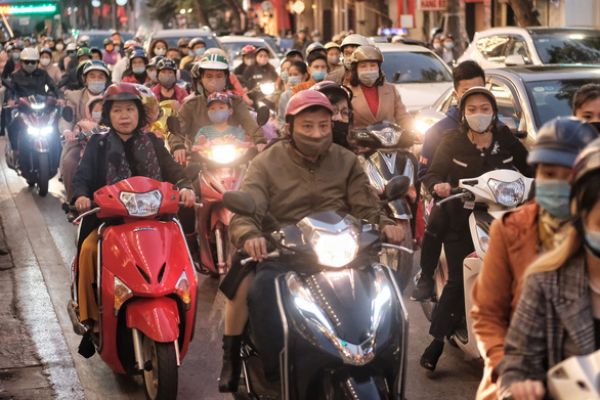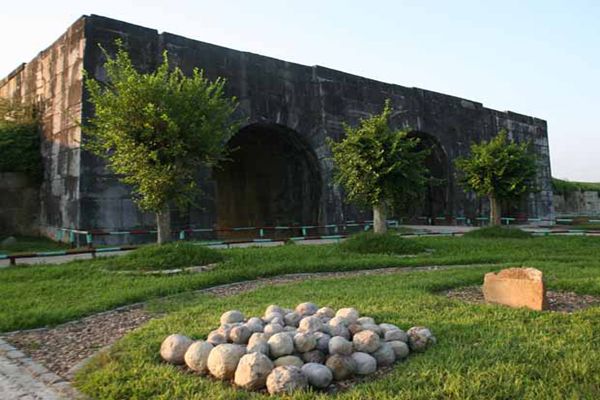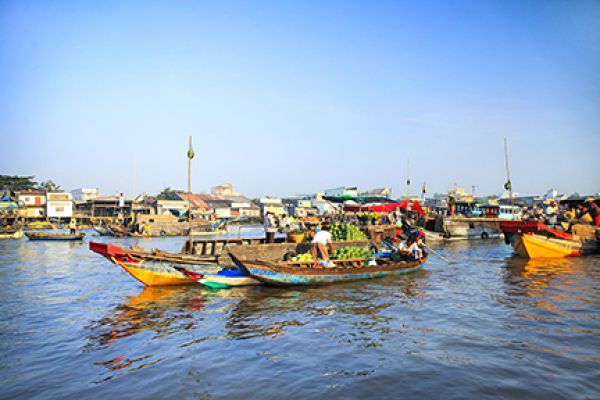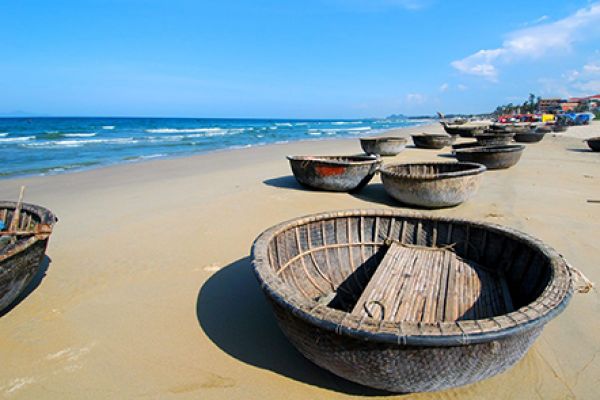
 Situated near the banks of the To Lich River, the ancient village of Hoa Muc in Trung Hoa, Cau Giay District of Hanoi, is known for many historical relics connected to its cultural and religious life dating back hundreds of years.
Situated near the banks of the To Lich River, the ancient village of Hoa Muc in Trung Hoa, Cau Giay District of Hanoi, is known for many historical relics connected to its cultural and religious life dating back hundreds of years.
Over history, Hoa Muc has been known as a defensive line against foreign invaders. The village is a precious historical treasure which has been embedded in the minds of the villagers and Hanoians alike.
Legend has it that Hoa Muc village was established during the Hung King dynasty (from 2879 BC to 258 BC according to “Dai Viet Su Ky Toan Thu”). In 40 AD, the battle led by the two Trung Sisters against the Ma Yuan invaders (Han dynasty) took place here. During the battles, two female generals of the Trung Sisters died and the villagers erected the Hai Co Temple to worship them. Inside the temple there is a stele from the Chinh Hoa Years (1680-1705) with inscriptions about the temple’s restoration. In the 5th century, Hoa Muc was renamed Trang Nhan Muc in Dich Vong District.
The village witnessed the death of Queen Pham Thi Uyen, a niece of Bo Cai Dai Vuong (Loyal Highest) Phung Hung, during her unyielding fighting against foreign aggressors in the 8th century. Following the queen’s example, her younger brothers, Pham Mien and Pham Huy, also joined Phung Hung’s army. When peace has restored to the country, Phung Hung visited the old battlefield and seeing the area was now safe he ordered the construction of a royal palace and a temple dedicated to his niece and nephews. Bo Cai Dai Vuong Phung Hung is now considered the village’s saint and is worshipped in the communal house.
During the Le dynasty (15th century), Hoa Muc was a battlefield where important strategies were devised to defeat the Ming invaders. King Quang Trung also used the village for military purposes when he was advancing from the South to the North in the late 19th century.
Today, most of the historic buildings in Hoa Mc are preserved fairly intact and under the law cannot be affected by the current wave of urbanization. It has six notable relics, including a communal house, temple, shrine, and pagoda, as well as an ancient well and village gate. The inner communal house for worshipping the sister and brothers of the Pham family who were credited with fighting bravely against the foreign invaders and Duc Anh temple have all been classified by the State as national relics.
In addition to the relics connected to the villager religious life, there are traditional houses over 100 years old that belong to great families, such as the Lai, Nguyen and Phung. 82-year-old Lai Khac Mo, a descendent of a large old family in the village said: “The old houses are made of wood and have delicate designs. The beams and frames are connected by wooden joints and bolts which can be easily assembled or taken apart, and they are carved with beautiful decorative patterns similar to those in the royal palace of the Nguyen dynasty (1802-1945). A musicologist came here to do research and said that Hoa Muc village could be turned into an open air museum of ethnology.”
Hoa Muc is a typical traditional village and a special cultural treasure in the northern delta of Vietnam.
Source: Vietnam Pictorial/VOVNews










(84-63) 3 826042 – (84-63) 3 511142
No 54 Nguyen Dinh Chieu, Ham Tien Central Mui Ne Beach Binh Thuan Vietnam
523 To Hien Thanh District 10 Ho Chi Minh City Vietnam
Ha Long Halong City Quang Ninh Vietnam
A13 Hung Thong 2 Halong City Quang Ninh Vietnam




